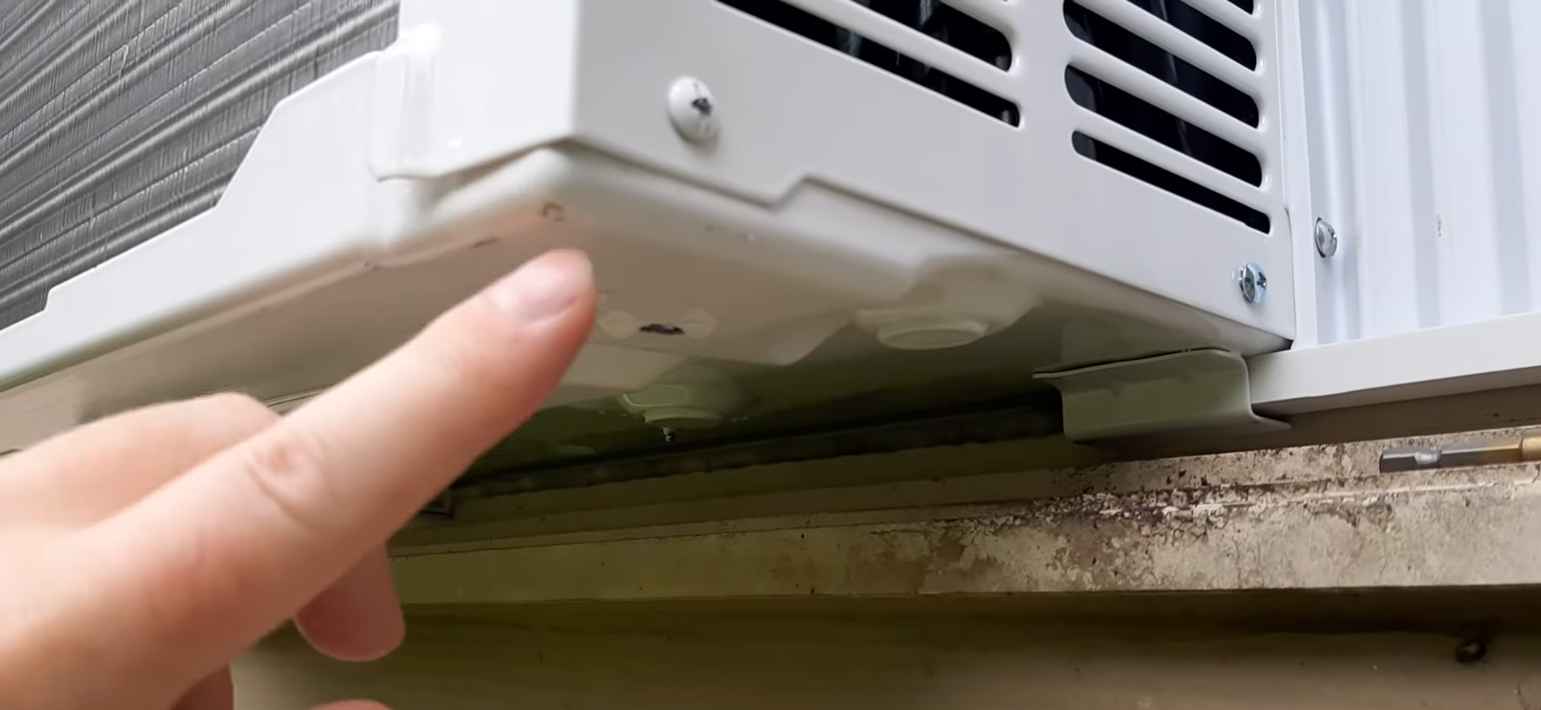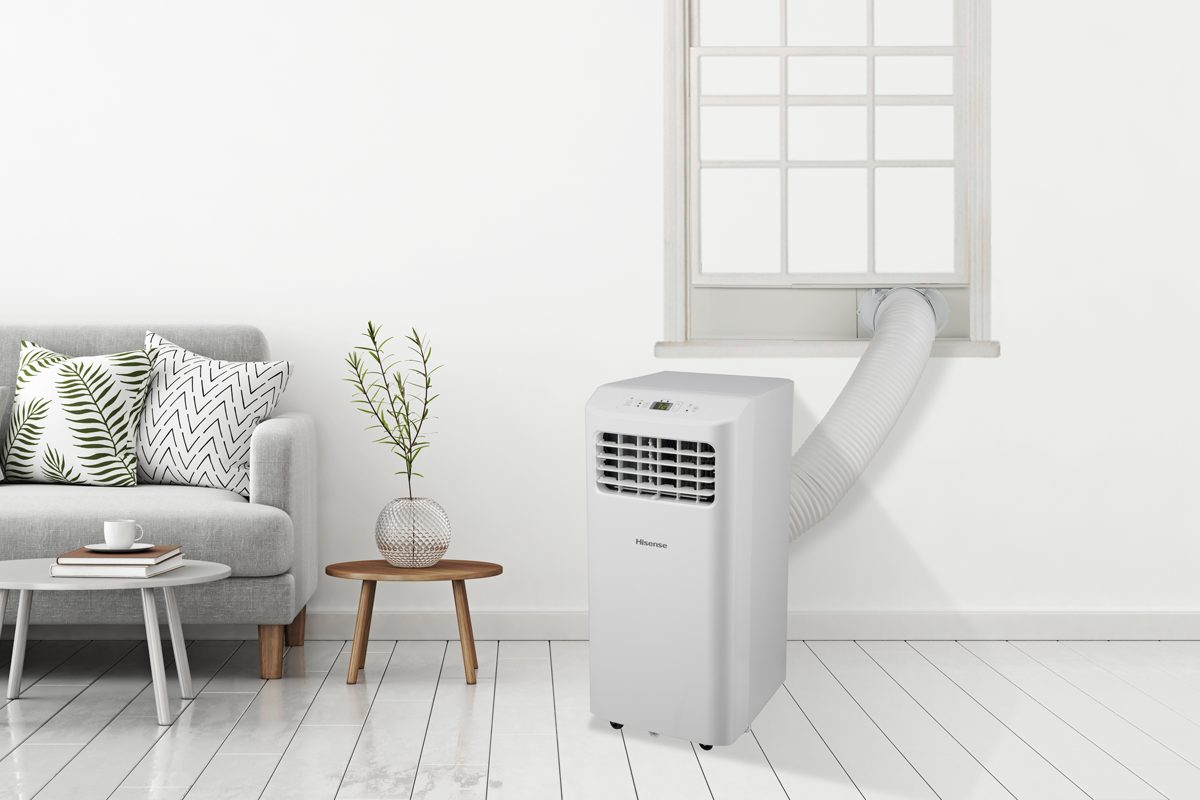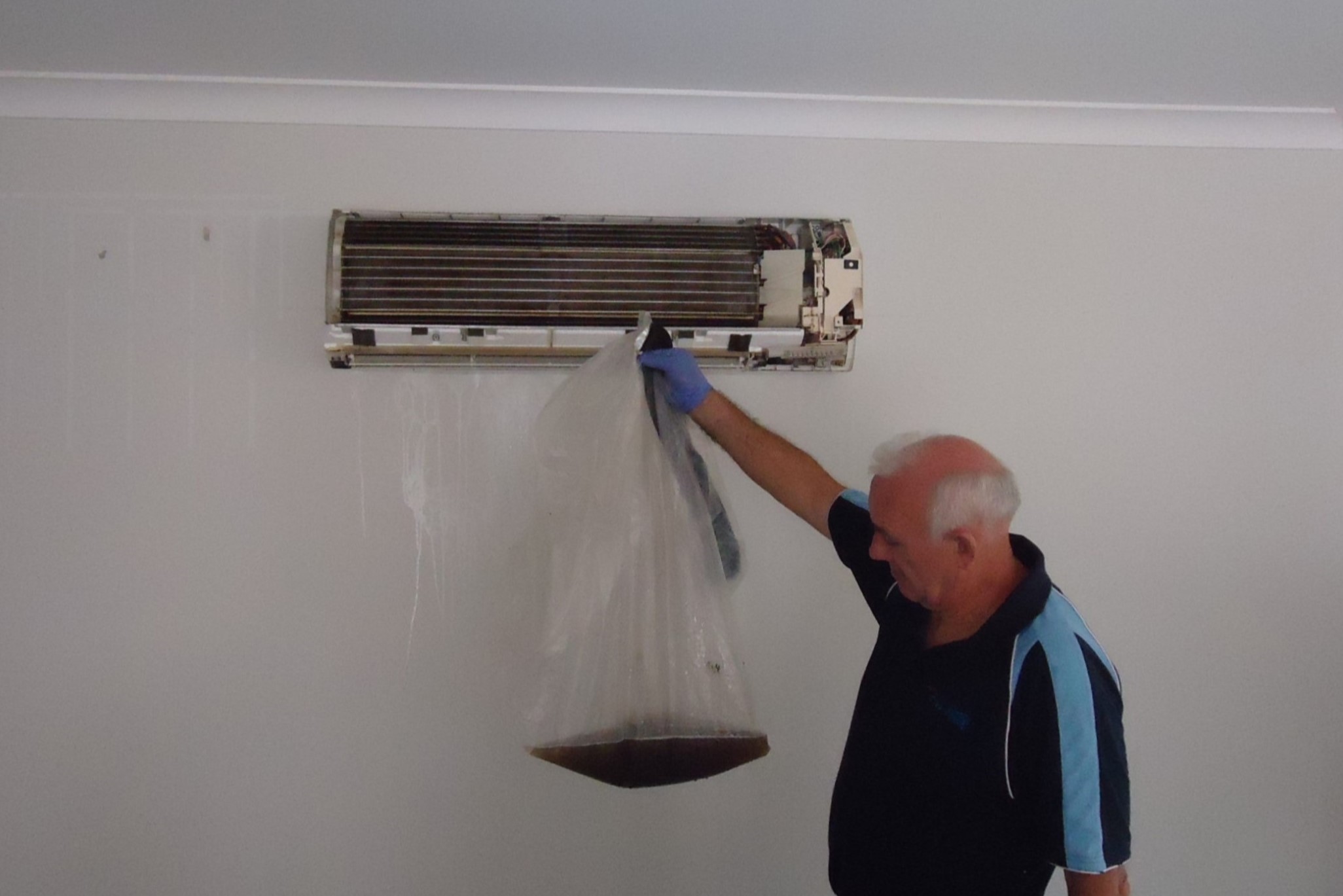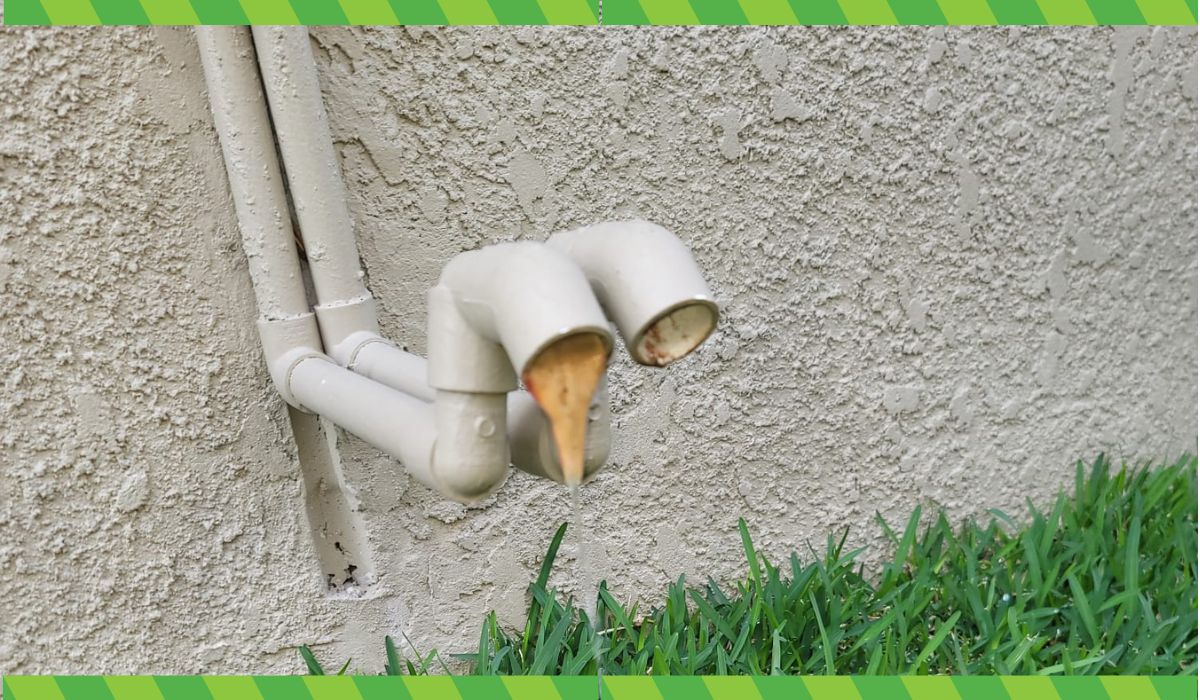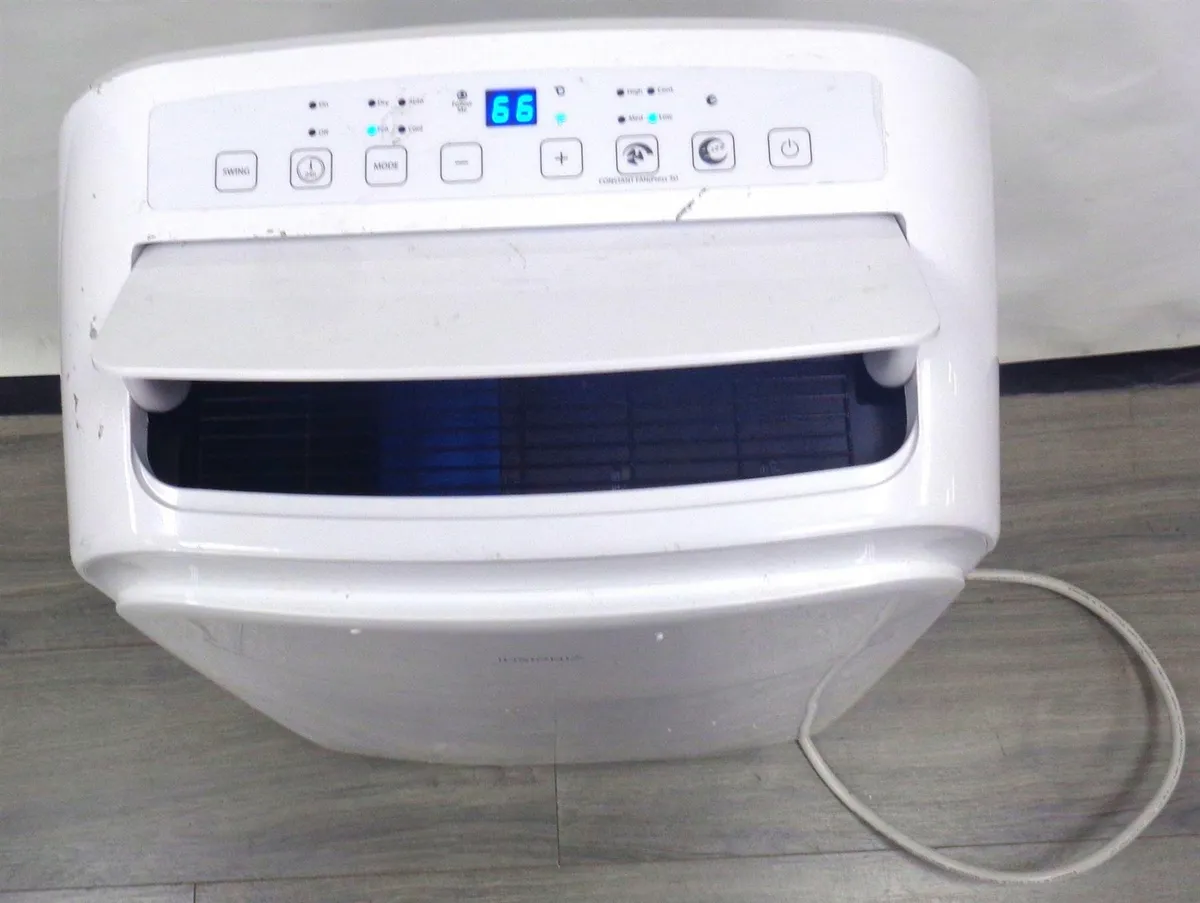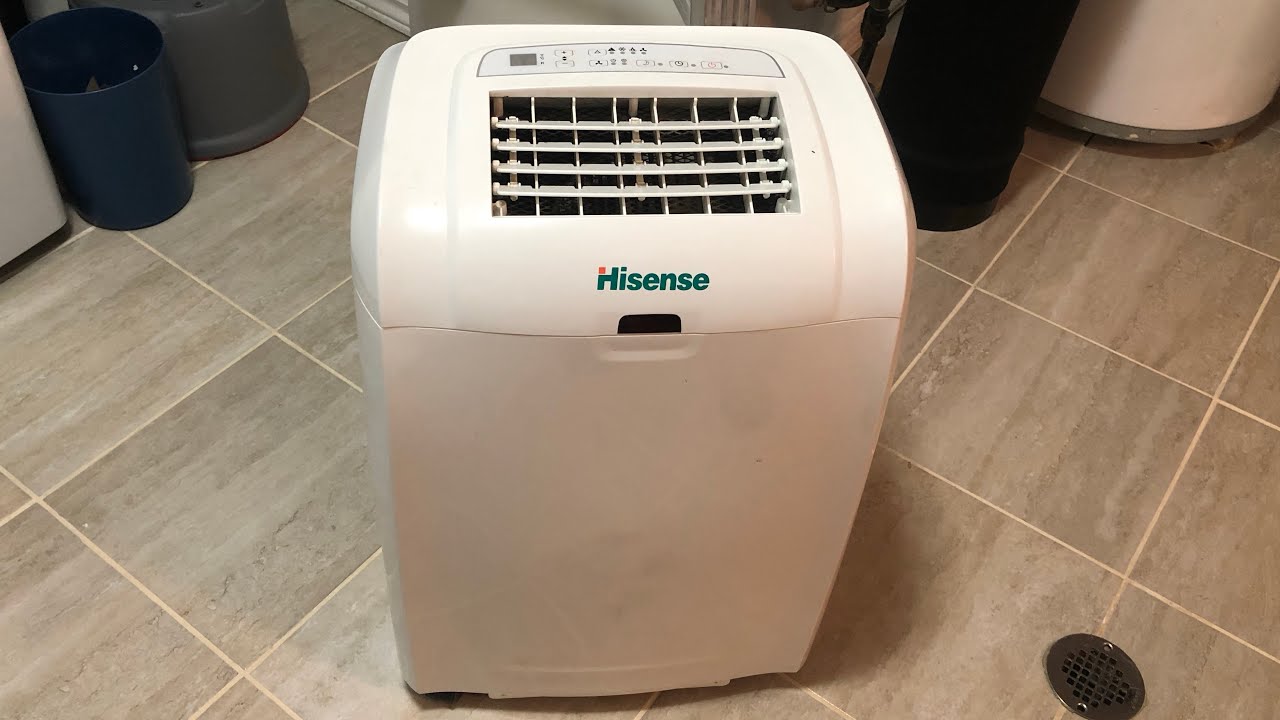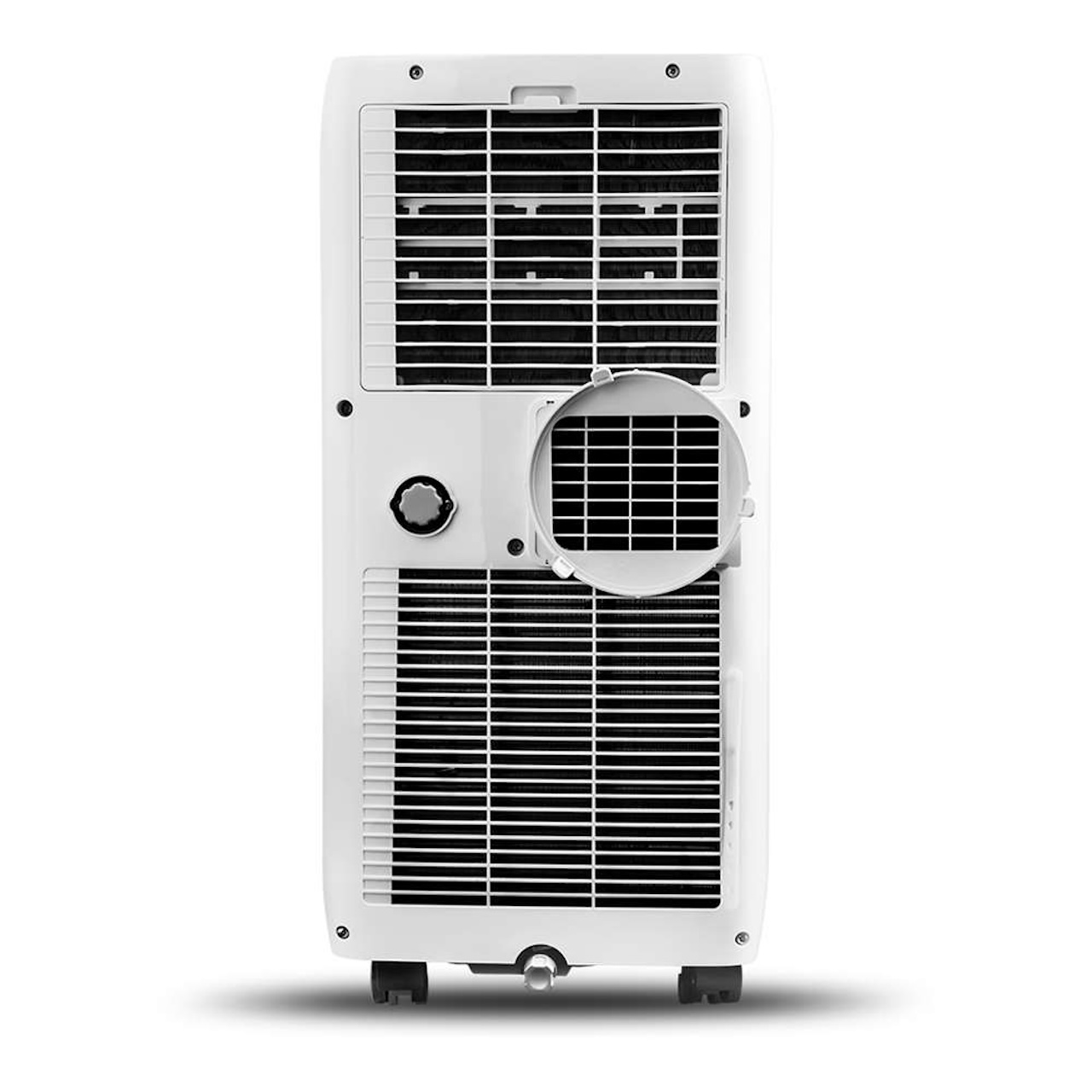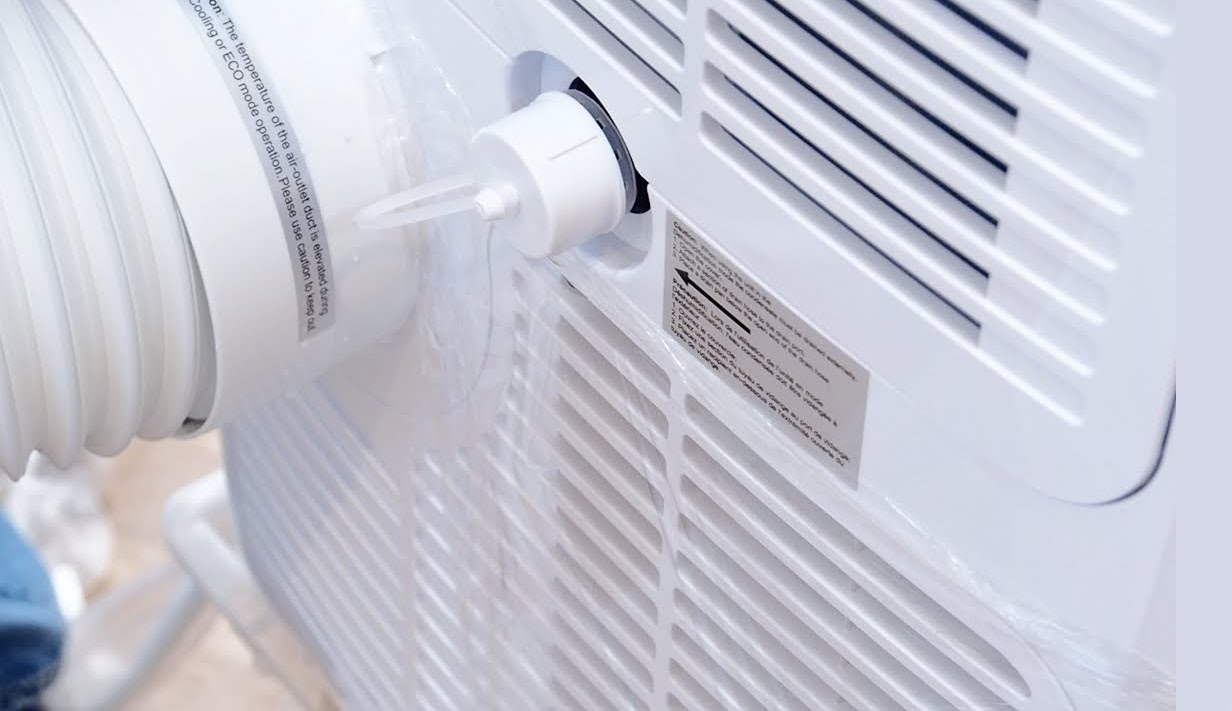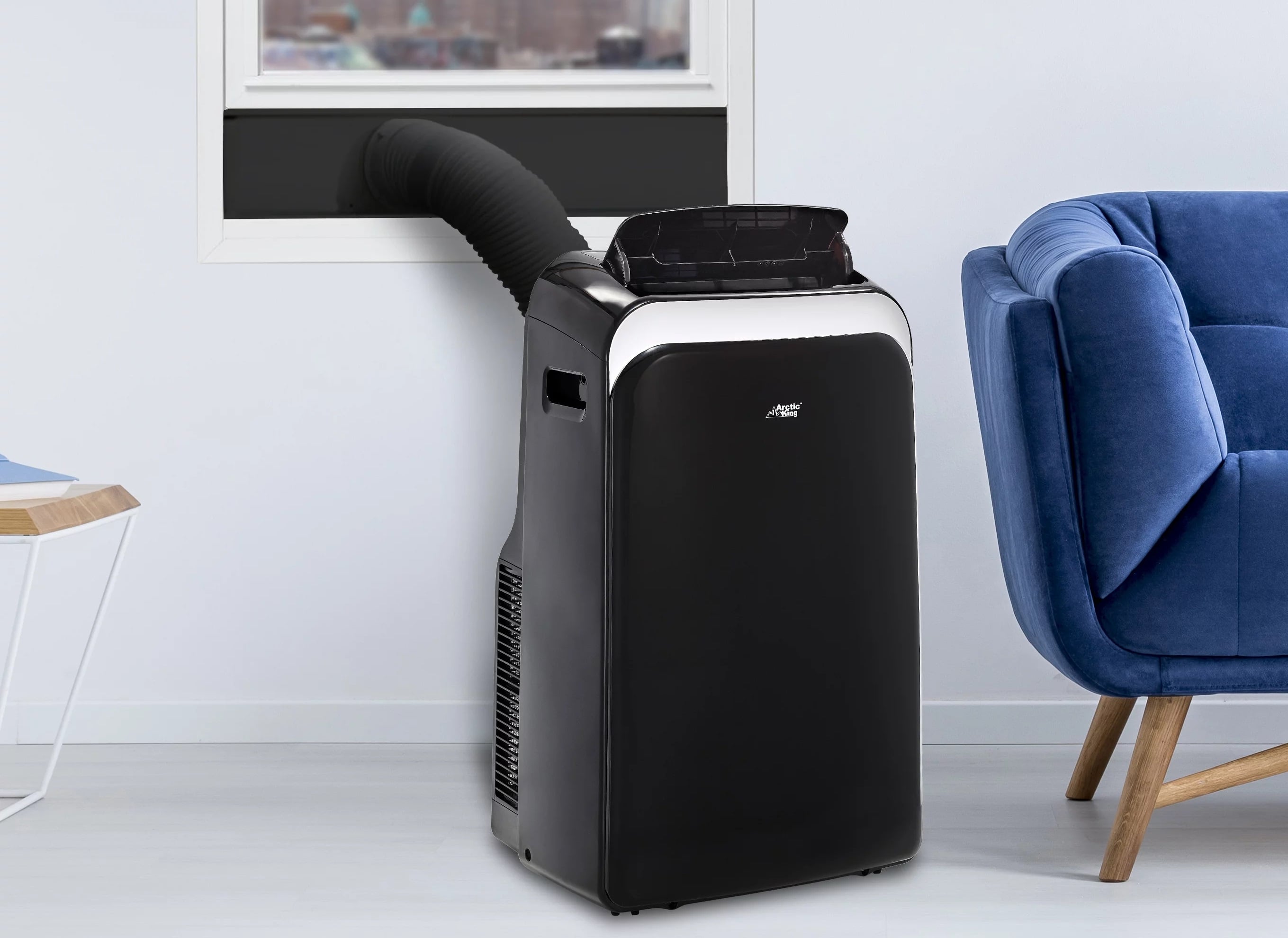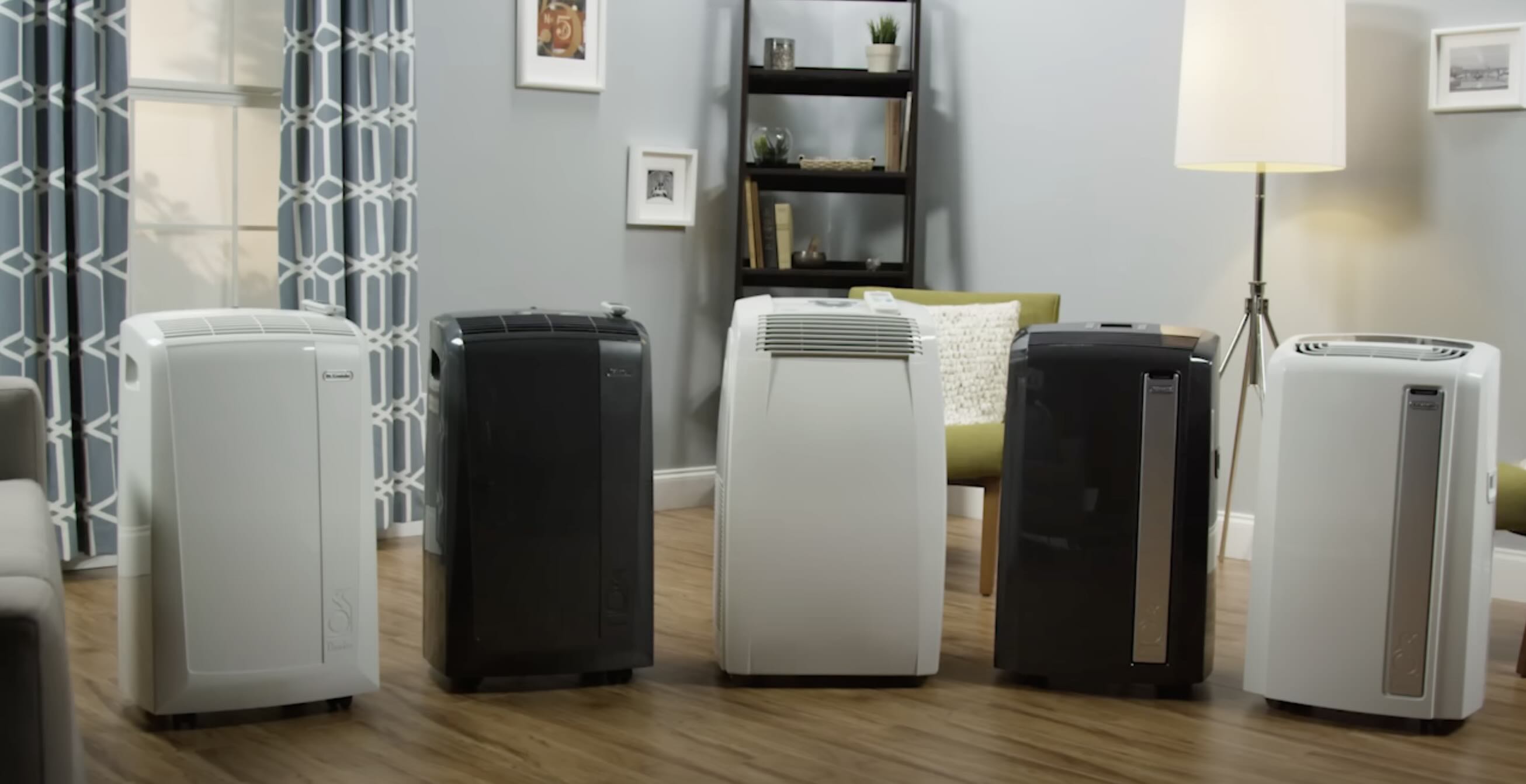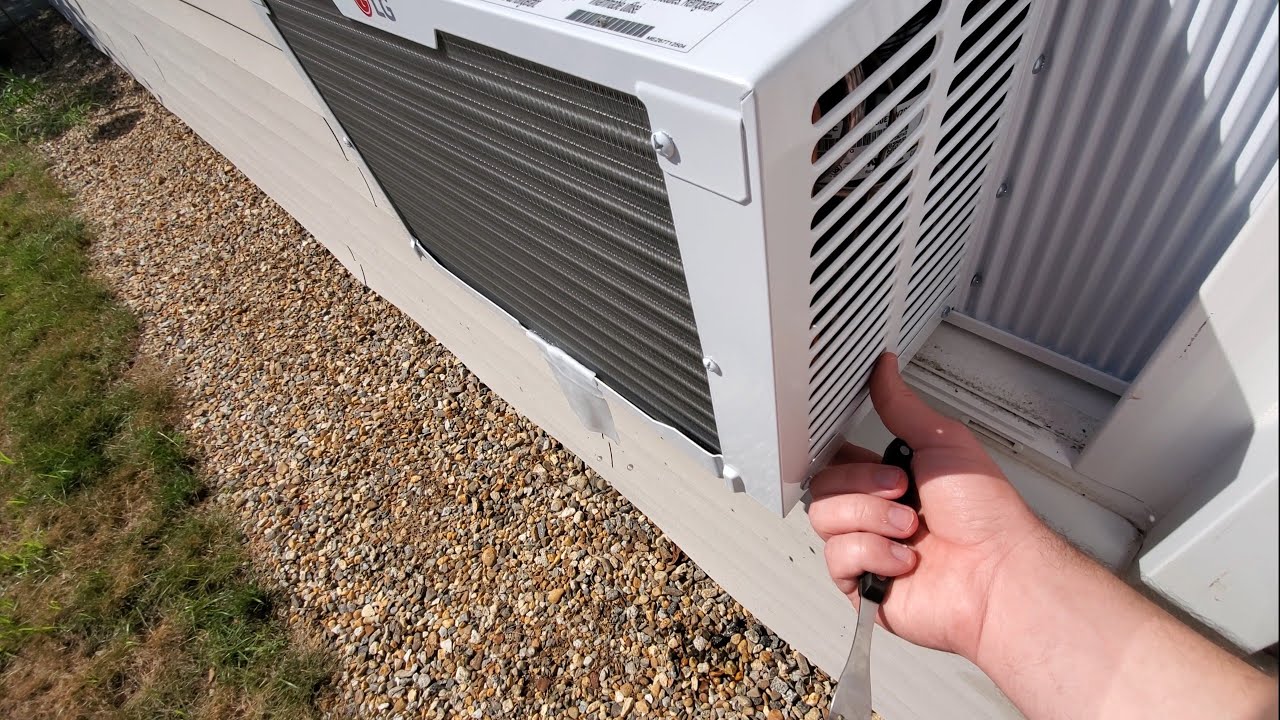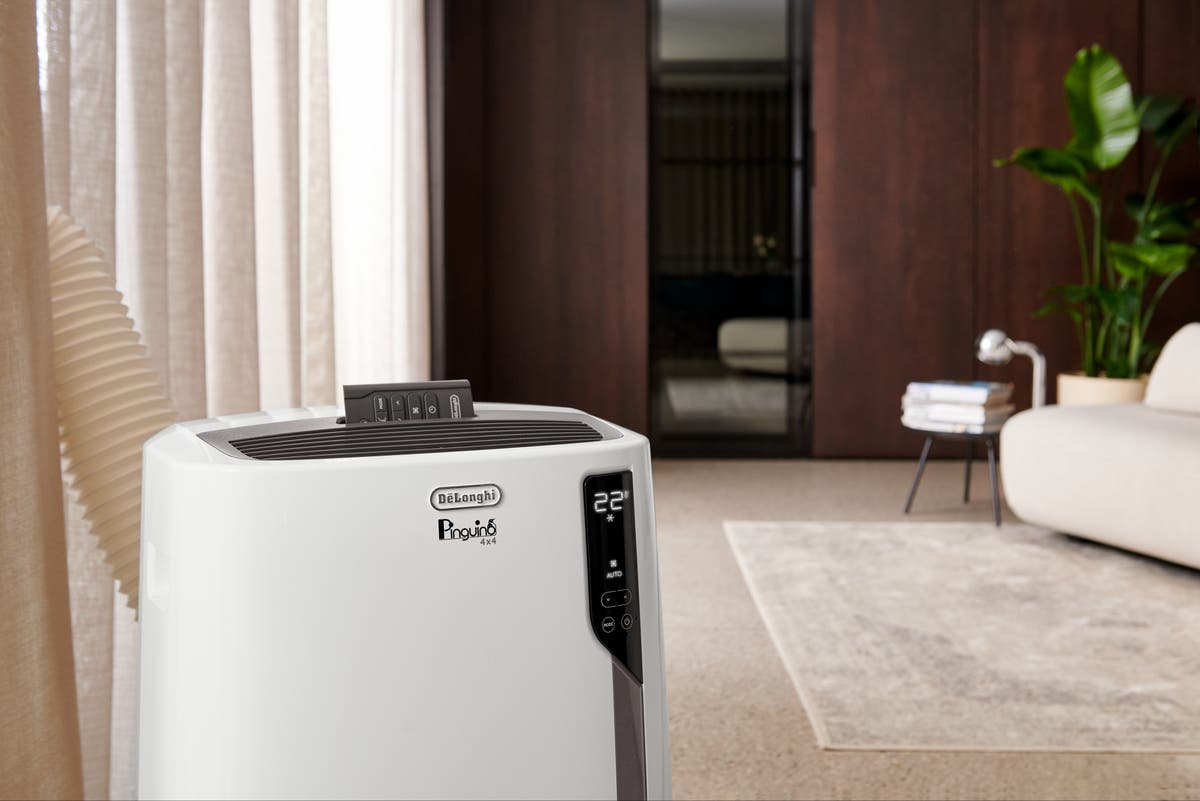Home>Home Maintenance>How To Drain An Air Conditioner
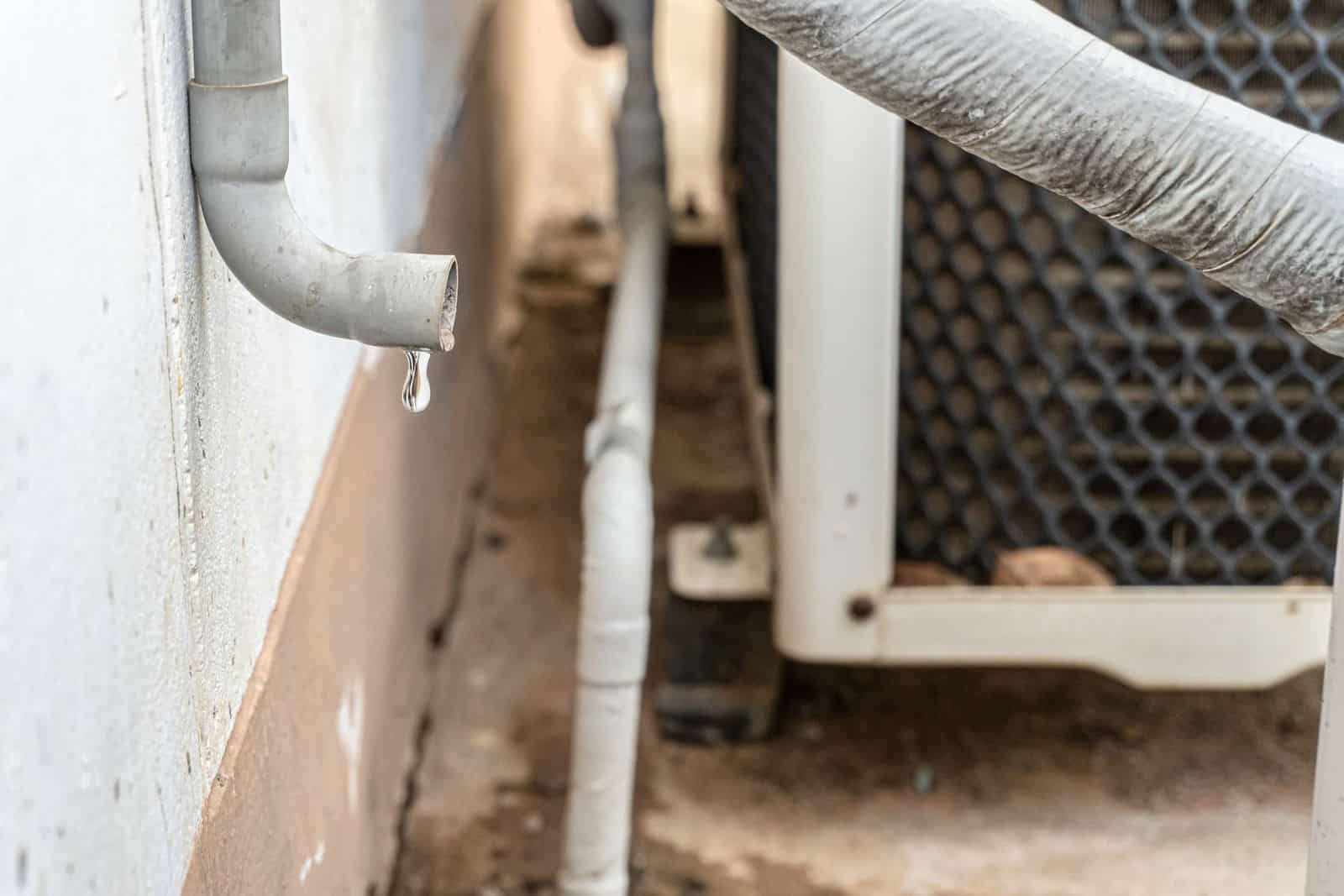

Home Maintenance
How To Drain An Air Conditioner
Modified: March 7, 2024
Learn how to drain your air conditioner with our simple home maintenance tips. Prevent buildup and keep your AC running smoothly all summer long.
(Many of the links in this article redirect to a specific reviewed product. Your purchase of these products through affiliate links helps to generate commission for Storables.com, at no extra cost. Learn more)
Introduction
Welcome to our comprehensive guide on how to drain an air conditioner. Air conditioners are essential for keeping our homes cool and comfortable during the hot summer months. However, as they operate, they also produce condensation which needs to be drained properly to prevent damage to the unit and potential water leaks in your home. In this article, we will walk you through the steps necessary to drain your air conditioner safely and efficiently.
Before we get started, it’s important to note that while draining an air conditioner might seem like a simple task, it is crucial to prioritize safety. Always make sure to turn off the unit and take necessary precautions to avoid any accidents or injuries during the process. Additionally, if you feel uncomfortable or unsure about any step, it is recommended to consult a professional HVAC technician.
Now that we have covered the basics, let’s dive into the step-by-step process of draining an air conditioner and ensure your cooling system functions optimally for years to come.
Key Takeaways:
- Safety First!
Before draining your air conditioner, always turn off the power, wear protective gear, and work in a well-ventilated area. Following safety precautions ensures a smooth and accident-free maintenance process. - Proper Preparation is Key
Gather the necessary tools and materials, locate the drainage port, and position the drainage container correctly. Proper preparation sets the stage for a successful and efficient air conditioner draining process.
Read more: How To Unclog An Air Conditioner Drain
Safety Precautions
Before you begin draining your air conditioner, it is important to take the following safety precautions to ensure your well-being:
- Turn off the power: Before attempting any maintenance or repair work on your air conditioner, always make sure to turn off the power supply. This will prevent any risk of electric shocks or accidents while handling the unit.
- Wear protective gear: It is recommended to wear protective gloves and safety glasses to protect your hands and eyes during the draining process. Additionally, wearing long sleeves and pants can help prevent any potential scrapes or burns.
- Use a stable ladder: If you need to access high areas of your air conditioner, ensure you are using a stable ladder that can support your weight. Avoid overstretching or leaning too far to maintain your balance.
- Avoid harsh chemicals: When cleaning or unclogging the drainage system, avoid using strong chemicals that can be harmful to your health or damage the unit. Instead, opt for mild, environmentally-friendly cleaning solutions.
- Work in a well-ventilated area: Make sure you are working in a well-ventilated space to avoid inhaling any fumes from cleaning solutions or mildew that could be present in the system.
- Read the manufacturer’s instructions: Different air conditioner models may have specific instructions for draining and maintenance. Take the time to read and understand the manufacturer’s manual before proceeding with any work on the unit.
By following these safety precautions, you can ensure a safe and smooth draining process for your air conditioner. Remember, if you are unsure about any step or encounter any difficulties, it is best to consult a professional HVAC technician who can provide expert guidance and assistance.
Tools and Materials Required
Before you begin draining your air conditioner, gather the following tools and materials to ensure a smooth process:
- Bucket or Drainage Container: You will need a suitable container to collect the water drained from the air conditioner. A bucket or a large basin can work well for this purpose. Make sure it has enough capacity to hold the water without overflowing.
- Rags or Towels: Keep some rags or towels handy to clean up any spills or drips during the process.
- Screwdriver: Depending on the type of air conditioner you have, you may need a screwdriver to remove any access panels or covers to access the drainage port.
- Plastic Tube or Pipe: To redirect the water flow from the drainage port to the collection container, you will need a plastic tube or pipe. Make sure it has a diameter that fits snugly into the drainage port to prevent leaks.
- Cleaning Solution: If you notice any buildup or clogs in the drainage system, a mild cleaning solution such as vinegar or bleach diluted with water can be used to flush out any debris or mold.
- Protective Gloves and Safety Glasses: Wear protective gloves and safety glasses to protect your hands and eyes from any potential hazards.
- Cleaning Brush: A small cleaning brush can be helpful for scrubbing away any stubborn debris or mold in the drainage port or pipes.
Having these tools and materials ready beforehand will make the process of draining your air conditioner much more efficient and convenient. Additionally, it is always a good idea to have a backup container in case your initial one fills up before you finish draining the unit.
Now that you have everything you need, let’s move on to the next step: turning off the air conditioner.
Step 1: Turn off the Air Conditioner
The first step in draining your air conditioner is to turn off the unit to ensure your safety and avoid any damage to the system. Follow these steps to properly turn off your air conditioner:
- Locate the power switch or circuit breaker that controls the air conditioner.
- If your air conditioner has a power switch, simply flip it to the “off” position. If there is no power switch, go to your electrical panel and find the circuit breaker labeled for the air conditioner. Flip the breaker to the “off” position.
- Wait for a few minutes to ensure that all power is completely cut off before proceeding to the next step.
By turning off the power to your air conditioner, you eliminate the risk of electric shocks and allow the system to cool down before draining any accumulated water. Remember, safety should always be your top priority when working with electrical appliances.
Now that the air conditioner is turned off, let’s move on to the next step: locating the drainage port.
Step 2: Locate the Drainage Port
Once you have turned off the air conditioner, the next step is to locate the drainage port. The drainage port is the opening or outlet through which the condensed water from the air conditioner is meant to drain out. Follow these steps to locate the drainage port:
- Refer to the manufacturer’s manual: Check the air conditioner’s manual or user guide, as it may provide specific instructions on where the drainage port is located.
- Inspect the unit’s exterior: Look carefully at the exterior of the air conditioner for any visible signs of a drainage port. It is typically located near the base of the unit.
- Remove access panels if necessary: If the drainage port is not visible from the outside, you may need to remove access panels or covers from the unit to expose it. Use a screwdriver or the appropriate tool to carefully remove any necessary panels.
- Observe any markings: Some air conditioners may have small markings or labels indicating the location of the drainage port. Look for these markings on the unit itself or on the access panels.
Once you have successfully located the drainage port, proceed to the next step: preparing the drainage system.
Read more: How To Drain A Portable Air Conditioner
Step 3: Prepare the Drainage System
With the drainage port located, it’s time to prepare the drainage system to ensure a smooth flow of water from your air conditioner. Follow these steps to prepare the drainage system:
- Check the condition of the drainage pipe: Examine the drainage pipe and ensure there are no cracks, leaks, or obstructions that could impede the flow of water. If you notice any issues, replace the pipe as necessary.
- Clear any debris or blockages: Use a small cleaning brush or a wire to remove any debris, dirt, or potential blockages from the drainage port. This will allow the water to flow freely without any obstructions.
- Clean the drainage container: If you are using a bucket or a drainage container, ensure that it is clean and free of any debris that could contaminate the water or cause clogs.
- Position the drainage container: Place the drainage container below the drainage port, making sure it is positioned securely to catch the water. It should be stable and level to prevent any spills or accidents.
- Attach the plastic tube or pipe: Connect one end of the plastic tube or pipe to the drainage port and ensure it fits securely. The other end of the tube should be placed inside the drainage container to direct the water flow into it.
By properly preparing the drainage system, you can ensure a clear pathway for the water to drain from your air conditioner without any issues. Now that the drainage system is ready, let’s move on to the next step: positioning the drainage container.
To drain an air conditioner, locate the condensate drain line and use a wet/dry vacuum to suction out any clogs or debris. This will help prevent water from backing up and causing damage to the unit.
Step 4: Position the Drainage Container
Now that you have prepared the drainage system, it’s time to position the drainage container to collect the water that will drain from your air conditioner. Follow these steps to properly position the drainage container:
- Select a suitable container: Choose a container that is large enough to hold the water that will drain from your air conditioner. A bucket or a large basin works well for this purpose.
- Place the container near the air conditioner: Position the container directly below the drainage port of your air conditioner. Ensure that it is stable and level to prevent any spills or accidents.
- Secure the container: If necessary, use bricks or other stable objects to secure the container in place, especially if you are working outdoors or on an uneven surface. This will prevent the container from tipping over while the water is draining.
- Check the positioning: Double-check the positioning of the container to ensure that it is directly beneath the drainage port and that the plastic tube or pipe is securely connected to both the drainage port and the container.
Properly positioning the drainage container is essential to collect the water efficiently without any spills or leaks. Take the time to ensure that the container is secure and located in the right position. Now that the container is ready, let’s move on to the next step: opening the drainage port.
Step 5: Open the Drainage Port
With the drainage container in place, it’s time to open the drainage port on your air conditioner to allow the water to flow out. Follow these steps to properly open the drainage port:
- Gently remove any covers or plugs from the drainage port: Some air conditioners may have covers or plugs installed in the drainage port to prevent debris or insects from entering. Carefully remove these covers or plugs, taking note of their position for reinstallation later.
- Inspect the drainage port for any blockages: Use a flashlight to check the drainage port for any visible blockages or clogs. If you notice any debris or buildup, use a small cleaning brush or wire to clear the blockage.
- Confirm that the drainage port is fully open: Ensure that the drainage port is completely open and unobstructed. This will allow the condensation water to flow freely into the drainage system.
Opening the drainage port will initiate the flow of water from your air conditioner, allowing it to drain properly. Take your time to ensure that the port is fully open and free from any blockages. Now that the drainage port is open, let’s move on to the next step: allowing the water to drain.
Step 6: Allow the Water to Drain
Now that the drainage port is open, it’s time to let the water drain from your air conditioner. Follow these steps to allow the water to drain properly:
- Monitor the drainage process: Keep an eye on the drainage container to ensure that the water is flowing steadily and without any obstructions. If you notice any issues, such as slow drainage or a sudden decrease in water flow, it could indicate a potential blockage that needs to be addressed.
- Be patient: The draining process may take some time, depending on the amount of water accumulated in your air conditioner. Avoid the temptation to speed up the process by forcefully flushing water or using excessive force. Let gravity do its job and allow the water to drain naturally.
- Check for leaks: As the water is draining, periodically check the connections between the plastic tube or pipe and the drainage port and container. Look for any signs of leaks or dripping and make adjustments if necessary to ensure a tight and secure connection.
During this step, it’s important to be patient and allow the water to drain at its own pace. Rushing the process or using excessive force can potentially cause damage to the drainage system or your air conditioner. Keep a close eye on the drainage process to ensure it is working smoothly. Once the water has fully drained, it’s time to clean and secure the drainage system, which we will cover in the next step.
Read more: How To Unclog An Air Conditioner Drain
Step 7: Clean and Secure the Drainage System
With the water drained from your air conditioner, it’s important to clean and secure the drainage system to maintain its efficiency and prevent future issues. Follow these steps to clean and secure the drainage system:
- Clean the drainage port: Use a small cleaning brush or wire to remove any residual debris or buildup from the drainage port. This will help prevent clogs and ensure smooth water flow in the future.
- Clean the plastic tube or pipe: If you used a plastic tube or pipe to redirect the water flow, rinse it with water to remove any dirt or algae that may have accumulated inside. This will help maintain proper drainage in the future.
- Secure the connections: Double-check the connections between the plastic tube or pipe and the drainage port and container. Ensure that they are tightly secured to prevent any leaks or disconnections.
- Sanitize if necessary: If you notice any signs of mold or mildew in the drainage system, sanitize it using a mild cleaning solution such as vinegar or bleach diluted with water. Follow the manufacturer’s instructions for proper dilution and application.
- Inspect the drainage container: After cleaning the drainage system, inspect the drainage container for any leftover debris or water. Clean it thoroughly and dry it before reusing it for future draining.
By cleaning and securing the drainage system, you can prevent future clogs and maintain optimal performance from your air conditioner. Regular maintenance of the drainage system will ensure efficient water drainage and prevent any complications that can arise from a blocked or malfunctioning system.
Now that the drainage system is clean and secure, it’s time to move on to the final step: turning the air conditioner back on.
Step 8: Turn the Air Conditioner back on
After completing the draining and cleaning process, it’s time to turn the air conditioner back on. Follow these steps to safely restart your air conditioner:
- Ensure the drainage system is properly secured: Double-check all the connections between the drainage port, plastic tube or pipe, and the drainage container to make sure they are tightly secured.
- Reinstall any covers or plugs: If you removed any covers or plugs from the drainage port during the process, reinstall them in their original positions. This will help protect the drainage system from debris and insects.
- Turn on the power supply: Locate the power switch or circuit breaker that controls the air conditioner. Flip the switch to the “on” position or flip the breaker back to the “on” position to restore power to the unit.
- Wait for the air conditioner to start: Depending on your air conditioner model, it may take a few moments for the unit to start up and begin cooling. Allow the air conditioner to fully start before adjusting the settings as desired.
- Monitor for any issues: Keep an eye on the air conditioner’s performance and check for any unusual sounds, leaks, or malfunctions. If you notice anything out of the ordinary, it may be a sign of a larger issue and may require professional assistance.
By following these steps, you can safely and effectively turn your air conditioner back on after draining and cleaning the system. Regular maintenance, including drainage, will help prolong the lifespan of your air conditioner and keep it running efficiently.
Congratulations! You have successfully drained your air conditioner and performed essential maintenance. Remember to schedule regular maintenance checks and cleanings to ensure that your air conditioner continues to operate at its best.
Thank you for reading our guide on how to drain an air conditioner. We hope that you found it helpful and informative. Stay cool and enjoy the comfort of a well-maintained air conditioning system!
Conclusion
Maintaining a properly functioning air conditioner is essential for a comfortable indoor environment, especially during the hot summer months. Draining your air conditioner is a crucial part of routine maintenance to prevent water damage and ensure optimal performance. By following the step-by-step guide we have provided, you can safely and effectively drain your air conditioner.
Remember to prioritize safety by turning off the power before beginning any maintenance work and wearing protective gear such as gloves and safety glasses. Take your time to locate the drainage port, prepare the drainage system, and position the drainage container correctly to collect the water. Opening the drainage port and allowing the water to drain naturally is essential, followed by cleaning and securing the drainage system to maintain its efficiency.
Once the process is complete, you can confidently turn your air conditioner back on, being mindful of any unusual sounds or issues that may arise. Regular maintenance, including draining and cleaning, is key to ensuring your air conditioner operates effectively and reliably.
We hope that this comprehensive guide has provided you with the knowledge and confidence to drain your air conditioner properly. Remember, if you ever feel unsure or uncomfortable with any step, it is always advisable to seek the assistance of a professional HVAC technician.
Thank you for reading our guide, and we wish you a cool and comfortable environment throughout the year!
Frequently Asked Questions about How To Drain An Air Conditioner
Was this page helpful?
At Storables.com, we guarantee accurate and reliable information. Our content, validated by Expert Board Contributors, is crafted following stringent Editorial Policies. We're committed to providing you with well-researched, expert-backed insights for all your informational needs.
